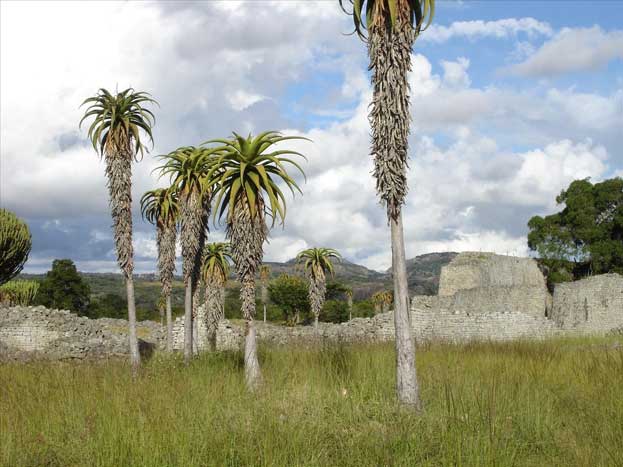Great Zimbabwe National Monument is approximately 30 km from Masvingo and located in the lowveld at an altitude of some 1100 m in a sparsely populated region of the Bantu/Shona people. The property, built between 1100 and 1450 AD, extends over almost 800 ha and is divided into three groups: the Hill Ruins, the Great Enclosure and the Valley Ruins. The Hill Ruins, forming a huge granite mass atop a spur facing north-east/south-west, were continuously inhabited from the 11th to 15th centuries, and there are numerous layers of traces of human settlements. Rough granite rubble-stone blocks form distinct enclosures, accessed by narrow, partly covered, passageways. This acropolis is generally considered a 'royal city'; the west enclosure is thought to have been the residence of successive chiefs and the east enclosure, where six steatite upright posts topped with birds were found, considered to serve a ritual purpose.
Continent: Africa
Country: Zimbabwe
Category: Cultural
Criterion: (I)(III) (VI)
Date of Inscription: 1986
The uniqueness of huts
The Great Enclosure, which has the form of an ellipsis, is located to the south of the hills and dates to the 14th century. It was built of cut granite blocks, laid in regular courses, and contains a series of daga-hut living quarters, a community area, and a narrow passage leading to a high conical tower. The bricks (daga) were made from a mixture of granitic sand and clay. Huts were built within the stone enclosure walls; inside each community area other walls mark off each family's area, generally comprising a kitchen, two living huts and a court.
 |
| Great Zimbabwe National Monument |
Browse Gallery Plus UNESCO Storyline
Huts decorations
The Valley Ruins are a series of living ensembles scattered throughout the valley which date to the 19th century. Each ensemble has similar characteristics: many constructions are in brick (huts, indoor flooring and benches, holders for recipients, basins, etc.) and dry stone masonry walls provide insulation for each ensemble. Resembling later developments of the Stone Age, the building work was carried out to a high standard of craftsmanship, incorporating an impressive display of chevron and chequered wall decorations.
Scientific research has proved that Great Zimbabwe was founded in the 11th century on a site which had been sparsely inhabited in the prehistoric period, by a Bantu population of the Iron Age, the Shona. In the 14th century, it was the principal city of a major state extending over the gold-rich plateaux; its population exceeded 10,000 inhabitants. About 1450, the capital was abandoned because the hinterland could no longer furnish food for the overpopulated city and because of deforestation. The resulting migration benefited Khami, which became the most influential city in the region, but signaled waning political power. When in 1505 the Portuguese settled in Sofala, the region was divided between the rival powers of the kingdoms of Torwa and Mwene-Mutapa.
Archaeological excavations have revealed glass beads and porcelain from China and Persia, and gold and Arab coins from Kilwa which testify to the extent of long-standing trade with the outer world. Other evidence, including potsherds and ironware, gives a further insight to the property's socio-economic complexity and about farming and pastoral activities. Monumental granite cross, located at a traditionally revered and sacred spiritual site, also illustrates community contact with missionaries.
Browse All UNESCO World Heritage Sites in
Zimbabwe. The original UNESCO inscription
Here!!!











No comments:
Post a Comment